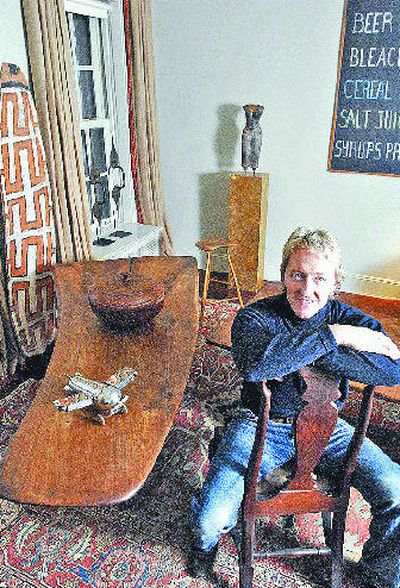Furniture from recent decades is the next old thing

Leigh Keno has devoted his life to the study, acquisition and sale of the very finest 18th- and early 19th-century American antiques. Yet in the past few months he has fallen for pieces for his own home by 20th-century furniture masters George Nakashima and Wharton Esherick.
Keno, a respected Manhattan dealer and dealer who frequently appears on PBS’s “Antiques Roadshow,” is as knowledgeable as anyone about the antiques market and canny about recognizing a good investment when he sees one. He is also a telling barometer of the increasingly muscular market for 20th-century furniture.
The strict definition of antique is reserved for pieces at least 100 years old. By that standard, very early 20th-century furnishings clearly make the cut. But pieces from the mid-century and even later are being scooped up by collectors aware of their growing value.
A celebration of the early part of the era’s aesthetic and innovation will be on display at the blockbuster modernism show opening at the Corcoran Gallery of Art in Washington, D.C., focusing on designs spanning 1914 to 1939. Twentieth-century sales and auctions across the country – including Miami, Chicago, New York, Los Angeles – have become increasingly heated as collectors grab pieces by superstars and lesser-knowns alike.
Collectors born since the 1960s are discovering modernism, says Corcoran Director Paul Greenhalgh, who is overseeing the show. “The 20th century has now become a historic period. It’s finished. It’s over with.” And therein lies its appeal.
Kathleen Doyle, chief executive of the Doyle auction house in New York, has seen a similar shift.”Who is out there promoting Queen Anne?” she says. “Nobody, because there are newer categories to promote.”
David Rago of Rago Arts and Auction Center in Lambertville, N.J. (where Keno bought his first Esherick pieces), agrees. “It’s the blue M&M phenomenon: the next new thing. Generation X wants hip. It’s what the designers and decorators want. It’s clean, it’s sleek, it’s available – and compared to new furniture, it’s relatively affordable.”
To be sure, the best and rarest 17th- through 19th-century pieces still fetch record prices, experts say, but demand has been slipping for midprice “brown furniture” from periods past. “There is a very soft market for Victorian, no question,” says Leslie Keno, Leigh’s twin and an American furniture expert at Sotheby’s auction house in New York.
Meanwhile, a 1988 Nakashima dining table set a record for the designer’s work – $822,400 – at a Sotheby’s sale in December. A 1948 coffee table by Japanese American sculptor-designer Isamu Noguchi set a midcentury furniture record of $630,000 in 2005 at the Wright auction house in Chicago.
Experiments with new materials – plastic, fiberglass, molded plywood, metals – and new organic, sinuous lines provide a welcome contrast to the formality and fussiness of some decorative predecessors, experts say.
“Americans in the ‘50s said, ‘We want to be modern, but we also want to be comfortable,’ ” notes Pat Kirkham, professor of design history at Bard Graduate Center for Studies in the Decorative Arts, Design and Culture in New York. The down-filled, leather Eames lounge chair “was never meant to be iconic, but to be used and used and used. It was meant to be the sort of comfy chair your old dad could sit in.”
The clean lines and sleek materials characteristic of 20th-century design are well suited to the current urban renaissance, says Geoffrey Diner, a 20th-century dealer in Washington. “The contemporary scene has been fueled by all these lofts with a more industrial look.”
And it’s not just Americans who are being rediscovered. At Prague Kolektiv in Brooklyn, N.Y., Barton Quillen sells Czech furniture, lighting and art glass from the 1920s to 1950s. Many of the pieces are tubular rather than solid – perfect, he says, for people “who move a lot, who have small spaces. They want to see lines and a wall against it.”
Buyers include hipsters, empty nesters, architects and designers drawn to “clean lines, to pieces with a history that are reasonably priced and comfortable.”